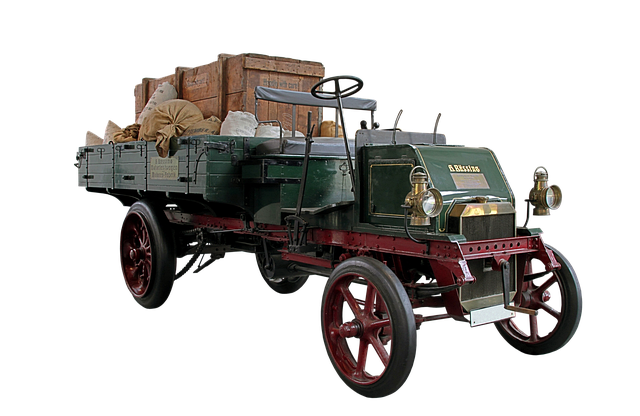Looking to register your car in California? This comprehensive guide breaks down the process step-by-step, ensuring a smooth experience. From understanding crucial vehicle registration requirements to gathering essential documents and navigating the importance of VIN verification, you’ll discover everything needed to successfully title and register your vehicle. By following these clear instructions, including detailed steps for VIN verification, you’ll be on the road in no time.
- Understand California Vehicle Registration Requirements
- Gather Necessary Documents for Car Registration
- Perform VIN Verification: Steps and Importance
- Choose an Appropriate Title and Register Your Car
- Pay Registration Fees and Receive Your Plate
Understand California Vehicle Registration Requirements

Before registering your car in California, it’s crucial to understand the state’s specific requirements. One key aspect is ensuring accurate and up-to-date information for vehicle identification number (VIN) verification. This process is essential for both new and used car owners. In California, a mobile VIN verifier or mobile VIN inspection service can be utilized to streamline this step, making it convenient for drivers to complete their registration without the hassle of visiting a DMV office.
During the registration process, you’ll need to provide valid documentation, such as proof of insurance and identification. Additionally, your vehicle must pass an emissions test (if applicable) and meet safety standards set by the state. Properly completing these requirements ensures that your car is legally registered and ready for California’s roads.
Gather Necessary Documents for Car Registration

Before you start the registration process, ensure you have all the required documents. The California Department of Motor Vehicles (DMV) will need your vehicle’s Vehicle Identification Number (VIN) for verification, so it’s crucial to obtain a reliable VIN inspection. You can opt for a traditional vin inspection at a DMV office or leverage modern solutions like mobile vin verification services that provide on-site or remote checks using a mobile vin verifier.
Other essential papers include your driver’s license, proof of insurance, and the title (or proof of ownership) for the vehicle. Additionally, you may need to bring along registration forms from the DMV and any applicable fees. Double-check with the DMV to ensure you have all necessary documentation before visiting their office or completing the online registration process.
Perform VIN Verification: Steps and Importance

Before proceeding with the car registration process in California, it’s crucial to perform a Vehicle Identification Number (VIN) verification. This step ensures that the vehicle’s details match the information provided by the manufacturer. A VIN inspection involves checking several key components, including the engine number, chassis details, and model specifications. It’s a critical process to prevent fraud and ensure safety.
To facilitate this, many individuals opt for a mobile VIN inspection or engage the services of a vin inspection specialist. These professionals use specialized tools to cross-reference the VIN with reliable databases, providing accurate vehicle history reports. A mobile vin verifier can come in handy, especially when dealing with vehicles that are not readily accessible to traditional inspection stations. This modern approach streamlines the verification process, making it more convenient for California residents looking to register their cars efficiently.
Choose an Appropriate Title and Register Your Car

Choosing the right title for your vehicle is a crucial step in the registration process. Ensure it accurately reflects your car’s make, model, and year to facilitate a smooth transaction at the California Department of Motor Vehicles (DMV). Accurate identification begins with a VIN verification, which confirms your vehicle’s unique 17-character Vehicle Identification Number (VIN) through trusted sources like a mobile vin verifier. This digital inspection ensures that your car matches the details on file, reducing potential issues later.
Once you’ve confirmed your vehicle’s identity, it’s time to register. Bring your completed application, proof of insurance, and any required fees to a local DMV office or utilize their online services. If opting for a mobile vin verification service, ensure they’re approved by the DMV to avoid any complications. This modern approach to vin inspection streamlines registration, allowing you to focus on enjoying your newly registered vehicle.
Pay Registration Fees and Receive Your Plate

After completing your vehicle’s registration application, it’s time to settle the fees. In California, registration costs vary based on several factors, including the type and age of your vehicle. You’ll need to pay these charges at a designated payment center or online through the DMV website. Once the payment is processed, you’ll receive confirmation along with details for retrieving your license plate.
Obtaining your license plate involves a simple process. The California DMV will issue a standard license plate or, if requested, a custom one. For a swift and convenient option, many residents choose to use a mobile vin verifier or undergo a mobile vin inspection. This service allows you to complete the plate selection and registration formalities from the comfort of your home or office.
Registering a car in California involves understanding specific requirements, gathering essential documents, completing a VIN verification process, choosing the right title, and paying registration fees. By following these steps, including the crucial vin verification, you can ensure your vehicle is legally registered and ready to hit the bustling California roads. Remember to keep your documentation up-to-date for a seamless driving experience.
